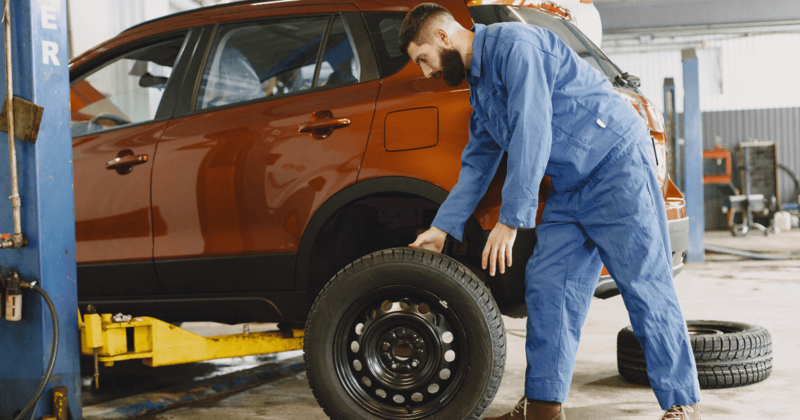Do you know when to replace your tires?

Your car’s tires can dramatically impact the safety and efficiency of your vehicle, especially in bad weather. Worn-out tires could make your car harder to handle, lower your gas mileage and increase your stopping distance. It’s also uncomfortable to drive a car with tires that need to be replaced.
Generally, you should replace your tires every six years (and no longer than every 10 years). But you should also check for wear and tear. Learn how your tires get worn out and what signs to look for.
How do tires get worn out?
The primary things that wear down and damage your tires include:
- Time. The more you drive, the more the rubber gets degraded and the tread wears down.
- Potholes and curbs. Hitting a pothole or a curb can cause a crack in your tire. If you don’t repair or replace it, you may end up with a blowout.
- Lack of maintenance. If your tires are under- or over-inflated, they will wear unevenly. Getting regular tire rotations can improve their performance and extend their lifespan.
- Environmental factors. UV exposure, temperature and other environmental factors can wear down the rubber and cause cracks or separation of the tread.
What are some signs that your tires need to be replaced?
As mentioned, six years is the rule of thumb for tire replacement, but your tires may need to be switched out sooner. Look for:
- Worn-out treads. Use a penny to check your tire tread depth. It should never be less than 2/32 of an inch.
- A bubble on the sidewall. Usually the result of hitting a pothole or curb, this can lead to a dangerous blowout.
- A shaking car. This could mean your tires are out of balance, so bring your car to a mechanic to get checked out.
- A tire pressure leak. If you keep getting alerts that your tire pressure is low, it may be time for a replacement.
Do you have questions about your car insurance and what it covers? Get in touch for a chat.
